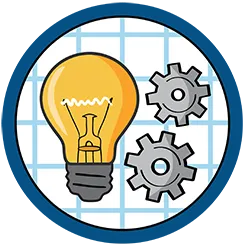
10 Steps to Inventing, Developing, And Patenting, a Product to Sell to the Global Market
Get Started Now


Introduction
Inventing, patenting, and selling a product to the global market is an exciting and rewarding journey. By following these eight steps, you can successfully navigate the process and bring your innovative product to customers worldwide. Keep in mind that each step may require adaptation based on your specific product, target market, and business goals. Stay persistent, learn from challenges, and continually refine your strategies to achieve long-term success in the global marketplace.

1. Ideation and Concept Development
The first step in the journey is to come up with a novel idea or concept for your product. Start by identifying a problem that needs solving or a gap in the market that your product could fill. Research existing products and assess their limitations to refine your idea further. Engage in brainstorming sessions, sketching, and creating mockups to help visualize your concept. This is also the stage to consider consulting with an invention firm that specializes in product design and development to provide expert guidance and resources.


2. Product Design and Development
Once you have a clear idea of your product, it's time to turn your concept into a functional design. Work closely with an invention firm or a team of product design and development specialists to create detailed technical drawings, 3D models, and specifications. This stage involves rigorous testing and refining to ensure that your product is not only visually appealing but also functional, safe, and cost-effective to manufacture. Consider using Computer-Aided Design (CAD) software and rapid prototyping technologies, such as 3D printing, to streamline this process.


3. Product Manufacturing
The next step is to select a suitable product manufacturing partner. This involves researching and vetting potential manufacturers, comparing quotes, and negotiating contracts. Ensure that your chosen manufacturing partner has the necessary expertise, equipment, and capacity to produce your product to the desired quality and volume. Establish clear communication channels and develop a strong working relationship to ensure that the production process runs smoothly and efficiently. Keep in mind that you may need to source components from multiple suppliers, manage logistics, and navigate international trade regulations when dealing with overseas manufacturers.

4. Patenting Your Product
Protecting your intellectual property is a crucial aspect of the invention process. Start by learning how to patent a product in your target markets, including the United States and other international territories. Consult with a patent attorney or agent to help you navigate the complex process of obtaining a product patent. They can guide you through the steps required, such as conducting a patent search, drafting a detailed patent application, and responding to any objections or queries raised by the patent office. Remember that patent protection is time-sensitive, so it's important to start this process as early as possible.

5. Market Research
In-depth market research is essential for understanding your target audience, competitors, and potential market opportunities. Analyze market trends, consumer preferences, and the competitive landscape to identify the best strategies for marketing and selling your product. This may involve conducting surveys, focus groups, or interviews with potential customers, as well as analyzing industry reports and data. Use your findings to develop a clear value proposition, pricing strategy, and marketing plan that aligns with your target market's needs and preferences.


6. Building a Brand and Marketing Strategy
Creating a strong brand identity and marketing strategy is vital for generating interest and demand for your product. Develop a compelling brand story, logo, and packaging design that resonates with your target audience. Invest in various marketing channels, such as social media, content marketing, email campaigns, and public relations, to build awareness and credibility for your brand. Consider partnering with influencers, bloggers, or industry experts to amplify your marketing efforts and reach a wider audience.


7. Sales and Distribution Channels
Establishing effective sales and distribution channels is crucial for getting your product into the hands of customers. Consider the advantages and challenges of various distribution options, such as e-commerce platforms, brick-and-mortar retail stores, or direct sales through your website. Evaluate the costs, logistics, and market reach associated with each channel to determine the best approach for your business. Keep in mind that international sales may require additional considerations, such as language translation, cultural adaptation, and compliance with local regulations and customs.

8. Scaling and Expansion
Once your product is successfully launched, it's essential to continually monitor, refine, and expand your strategies to maintain and grow your market share. Analyze sales data, customer feedback, and market trends to identify areas for improvement and capitalize on new opportunities. Be prepared to adapt your product, marketing, and distribution strategies based on changing market conditions and customer preferences. As your business grows, consider expanding your product line, entering new markets, or partnering with other companies to increase your global reach and competitiveness.

9. Protecting Intellectual Property Internationally
While obtaining a patent in your home country is crucial, don't overlook the importance of protecting your intellectual property in international markets. Work with an experienced patent attorney or an invention firm to help you understand the patent application process in different countries and regions. Filing for international patents under the Patent Cooperation Treaty (PCT) can be a cost-effective way to secure protection in multiple countries simultaneously. Keep in mind that enforcing intellectual property rights may vary across jurisdictions, so it's essential to have a robust strategy in place to address potential infringements.


10. Building a Strong Brand Identity
Your brand is the foundation of your product's success in the global market. It's essential to create a strong brand identity that resonates with your target audience and differentiates your product from competitors. Invest time and resources into developing a memorable logo, a consistent visual identity, and a compelling brand story. These elements will help convey your product's unique selling points and create an emotional connection with customers, leading to brand loyalty and long-term success. Collaborate with skilled designers and marketers to refine your brand strategy and ensure that it effectively communicates your product's value proposition across various cultures and languages.

Conclusion
By following these ten steps and thoroughly addressing each aspect of product manufacturing, invention firm collaboration, obtaining a product patent, product design and development, and patenting a product, you can successfully navigate the complex process of inventing, patenting, and selling a product to the global market. Remember that building a successful product and brand takes time, effort, and continuous improvement. Embrace the challenges, learn from your experiences, and stay committed to your vision as you embark on this exciting entrepreneurial journey. Inventing, patenting, and selling a product to the global market is a complex and rewarding process that requires dedication, adaptability, and persistence. By following these eight steps and incorporating the essential keywords of product manufacturing, invention firm, how to get a product patent, product design and development, and how to patent a product, you can successfully bring your innovative product to customers worldwide. Stay focused, learn from challenges, and celebrate your successes as you navigate this exciting journey.
Disclaimer: It is the inventor's responsibility to research and vet companies before entering into a business relationship with any company.